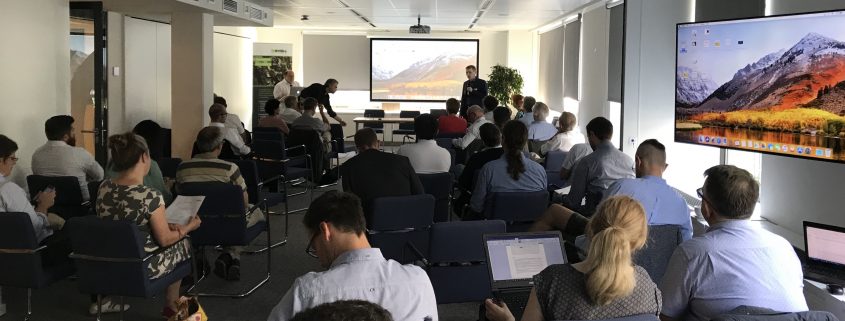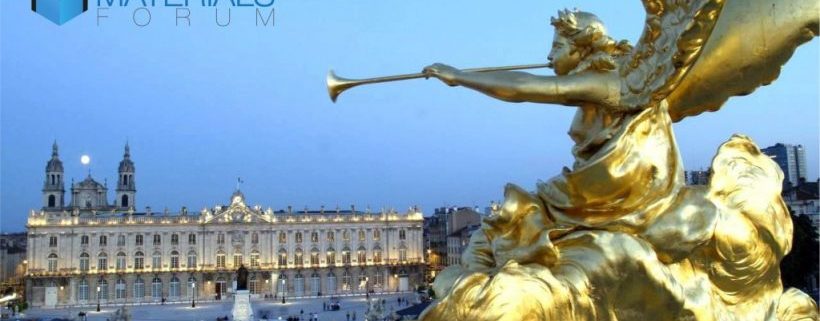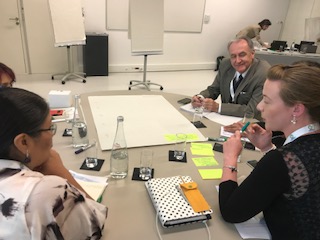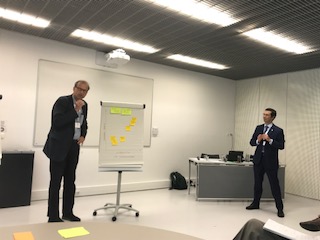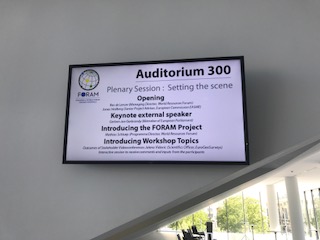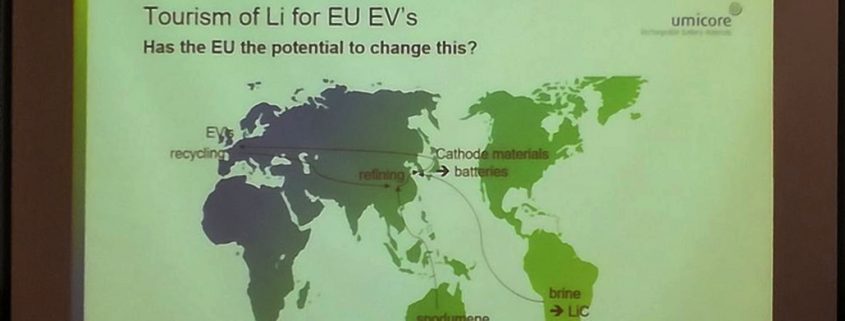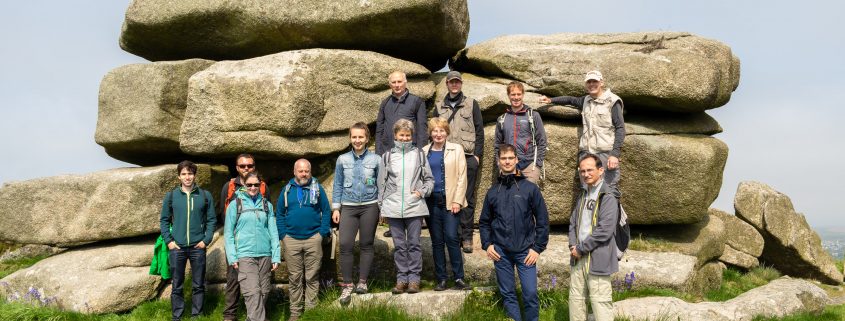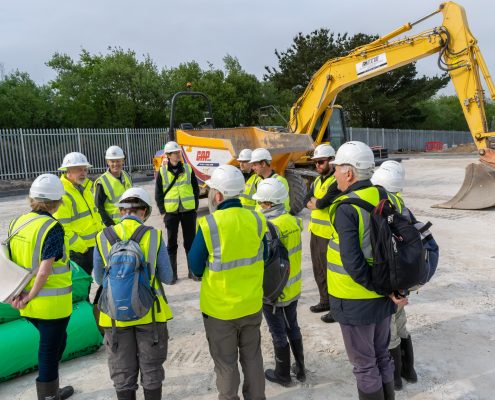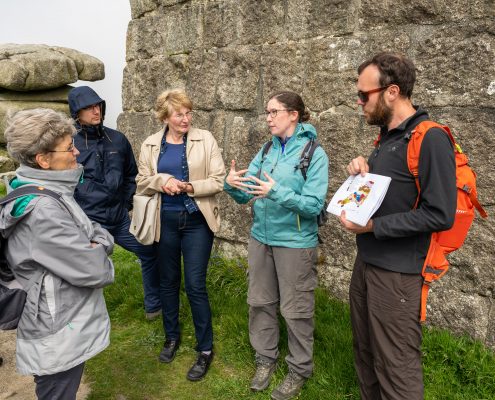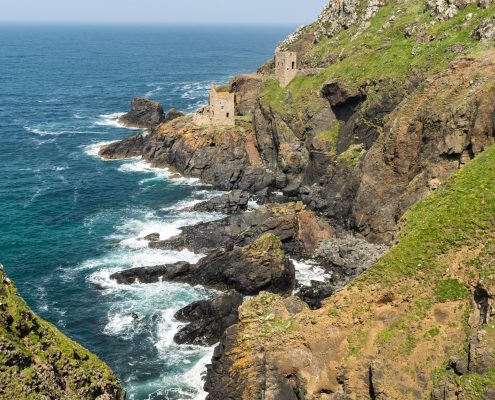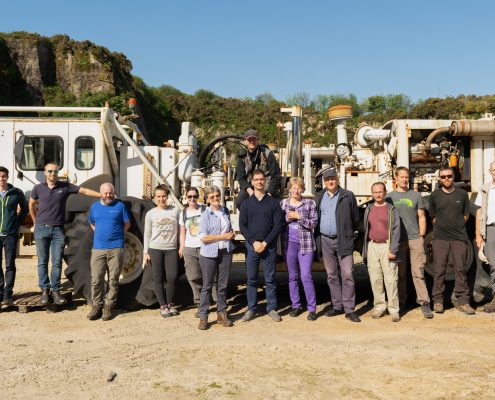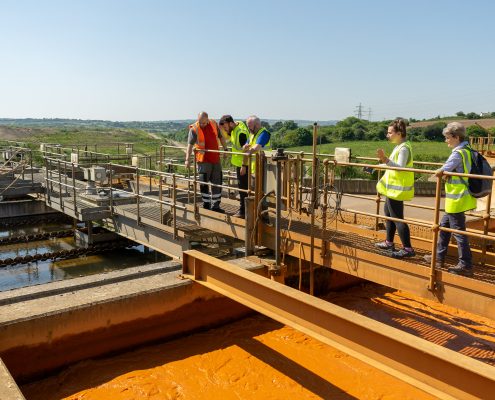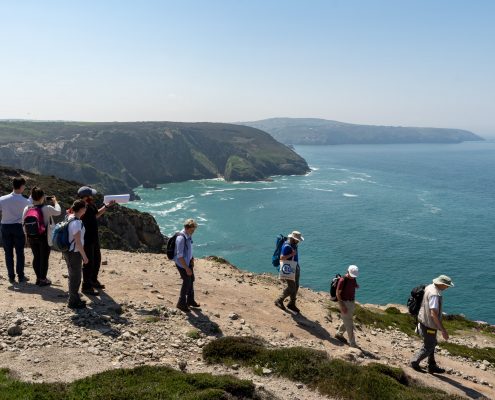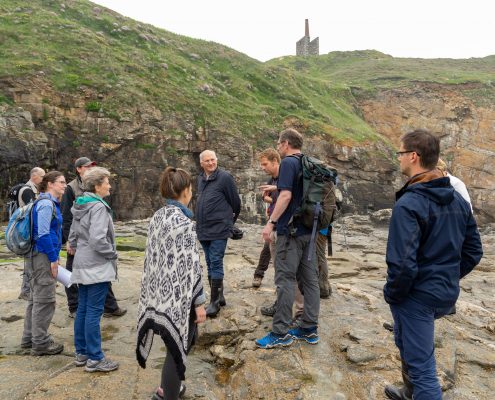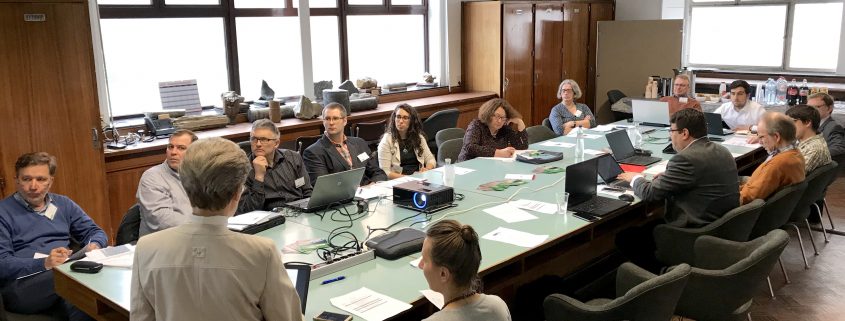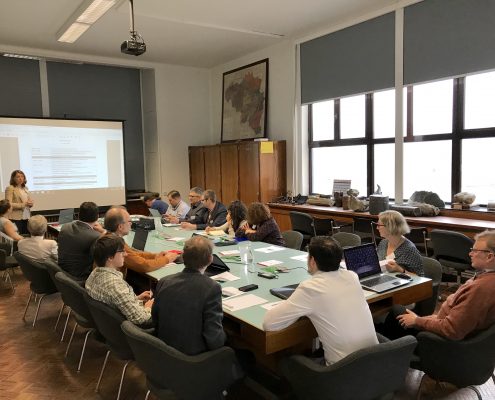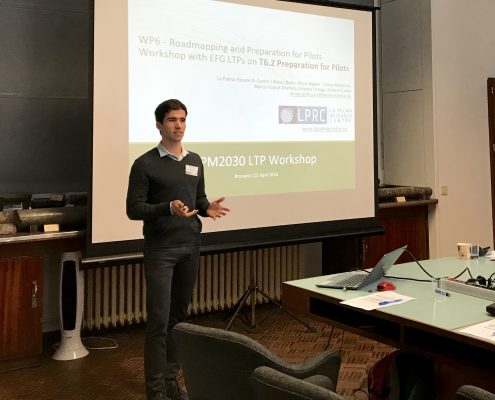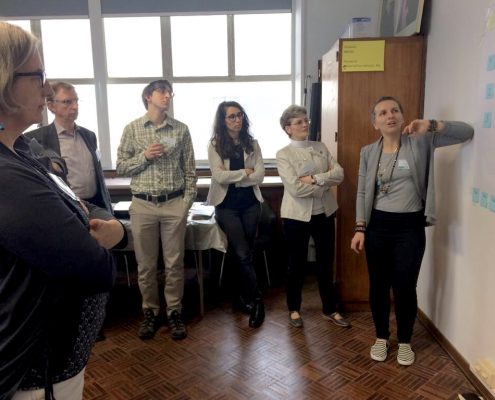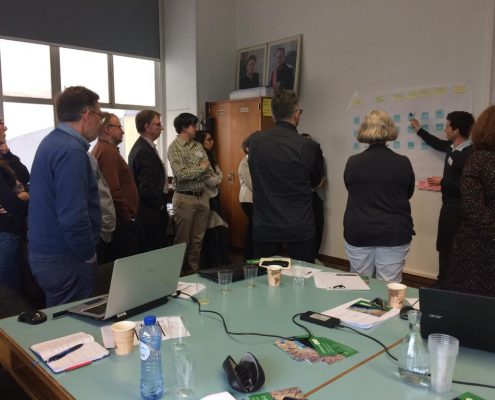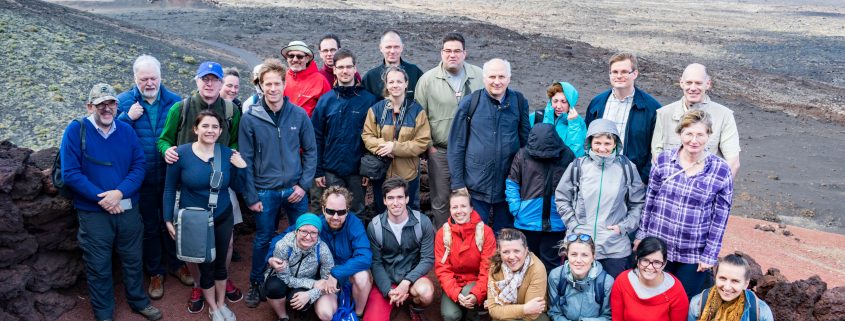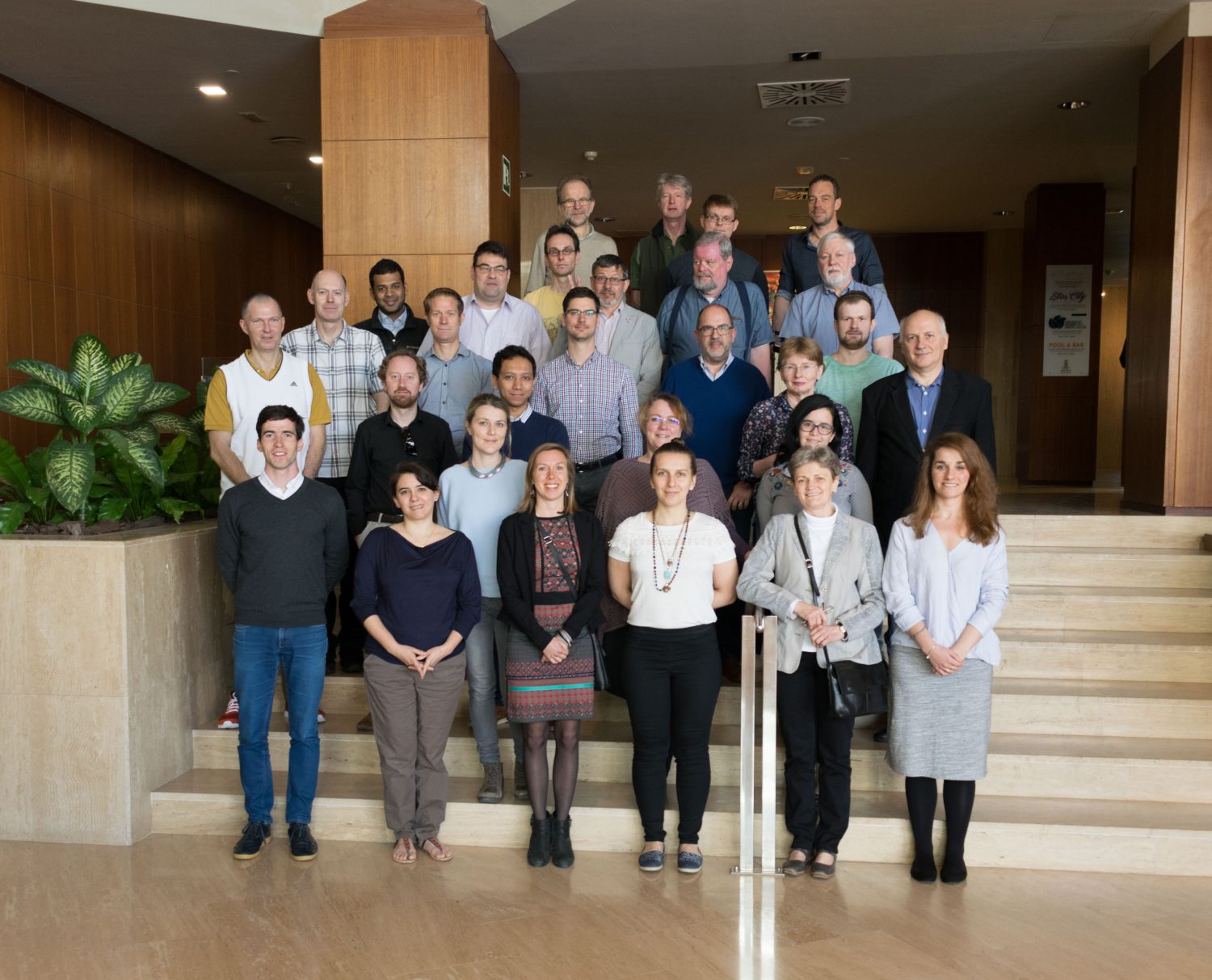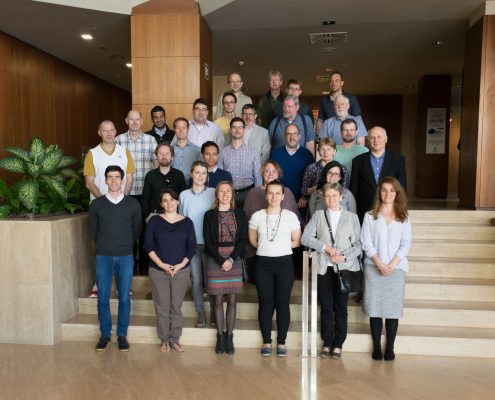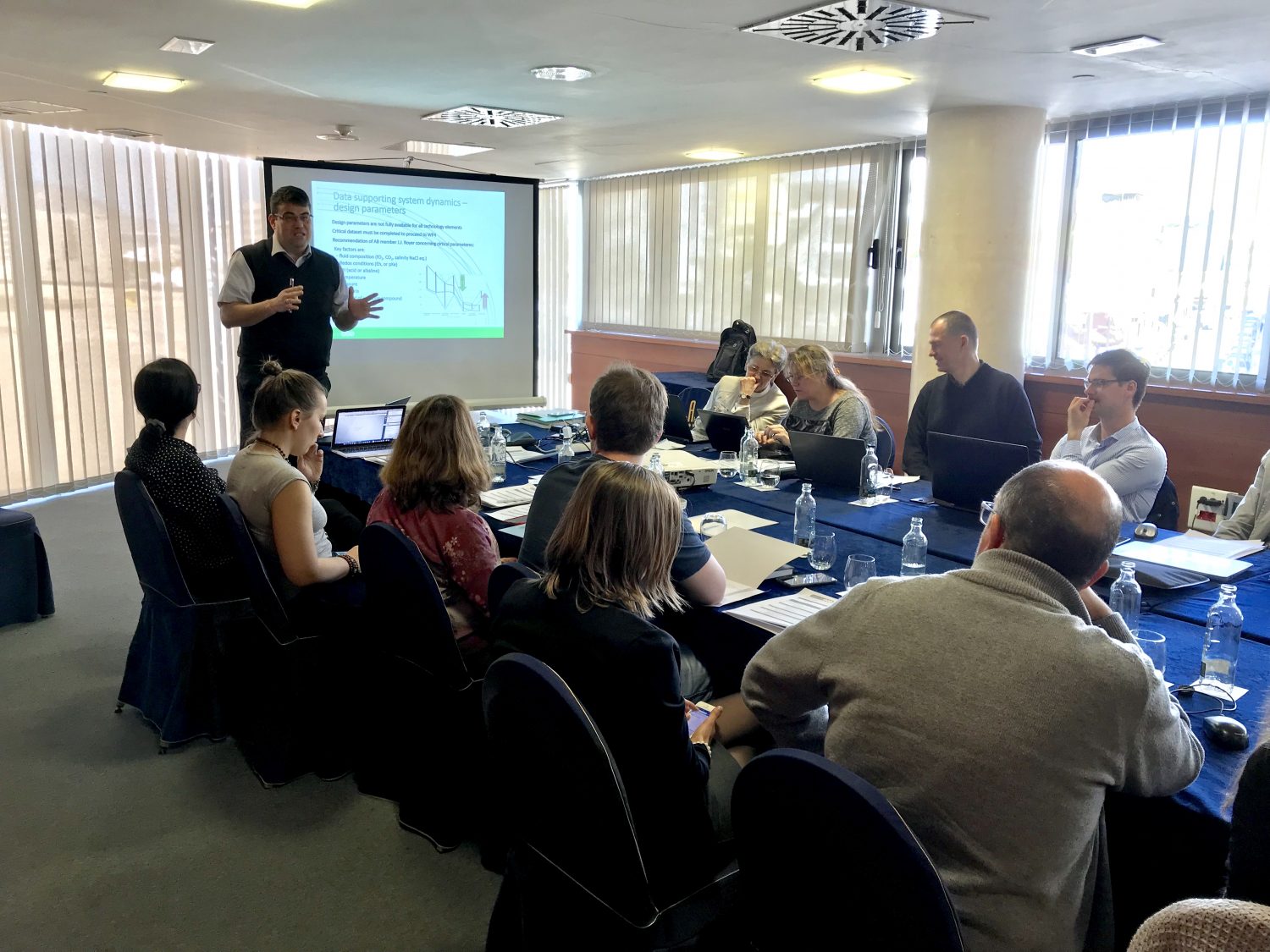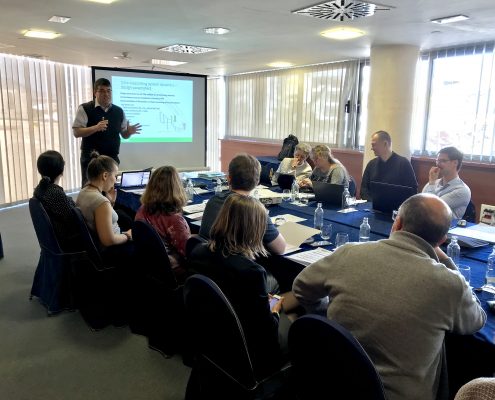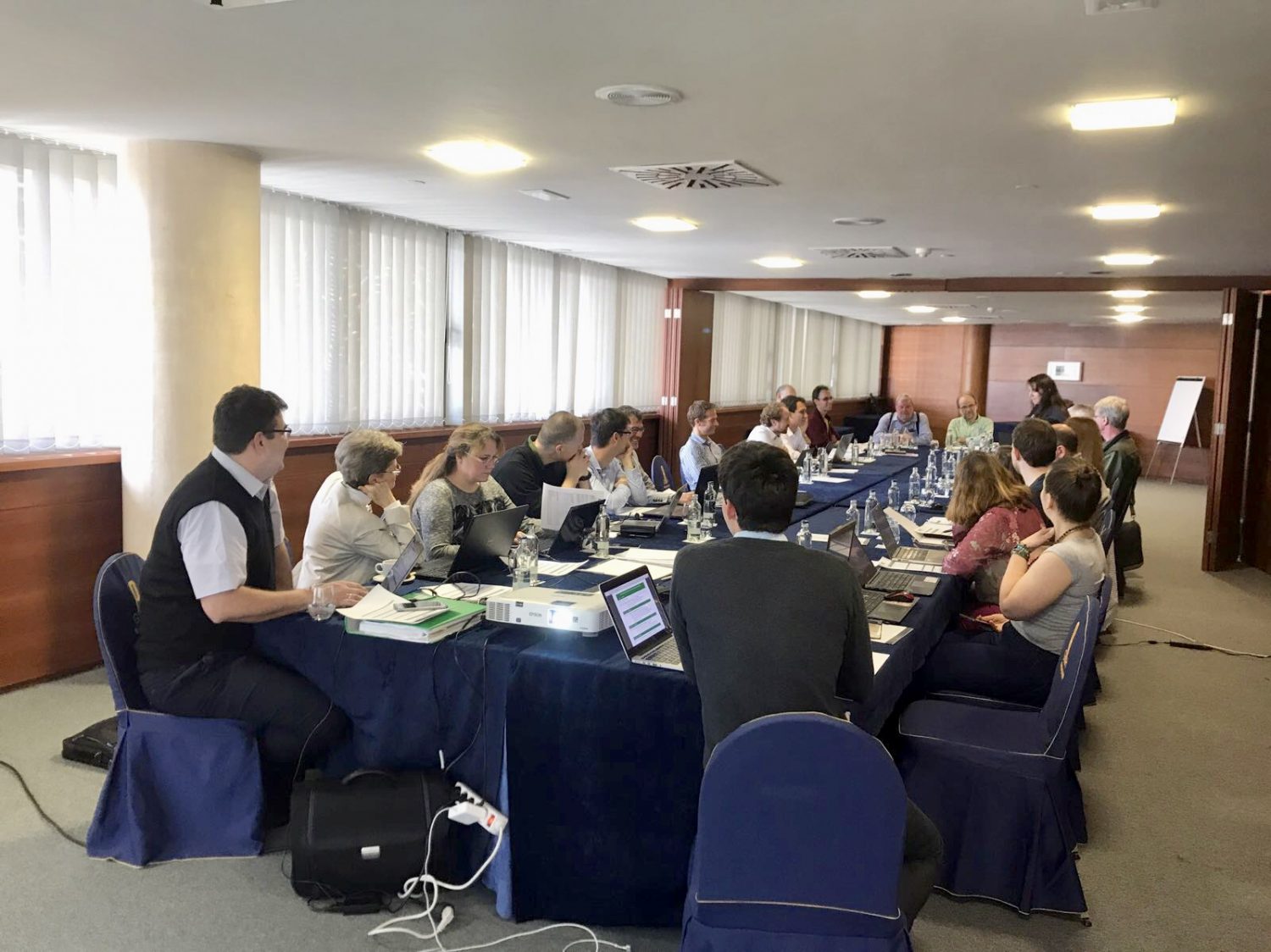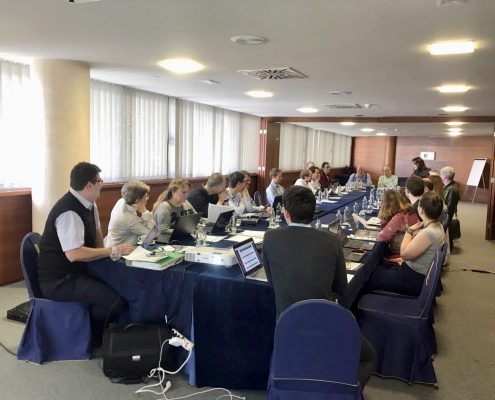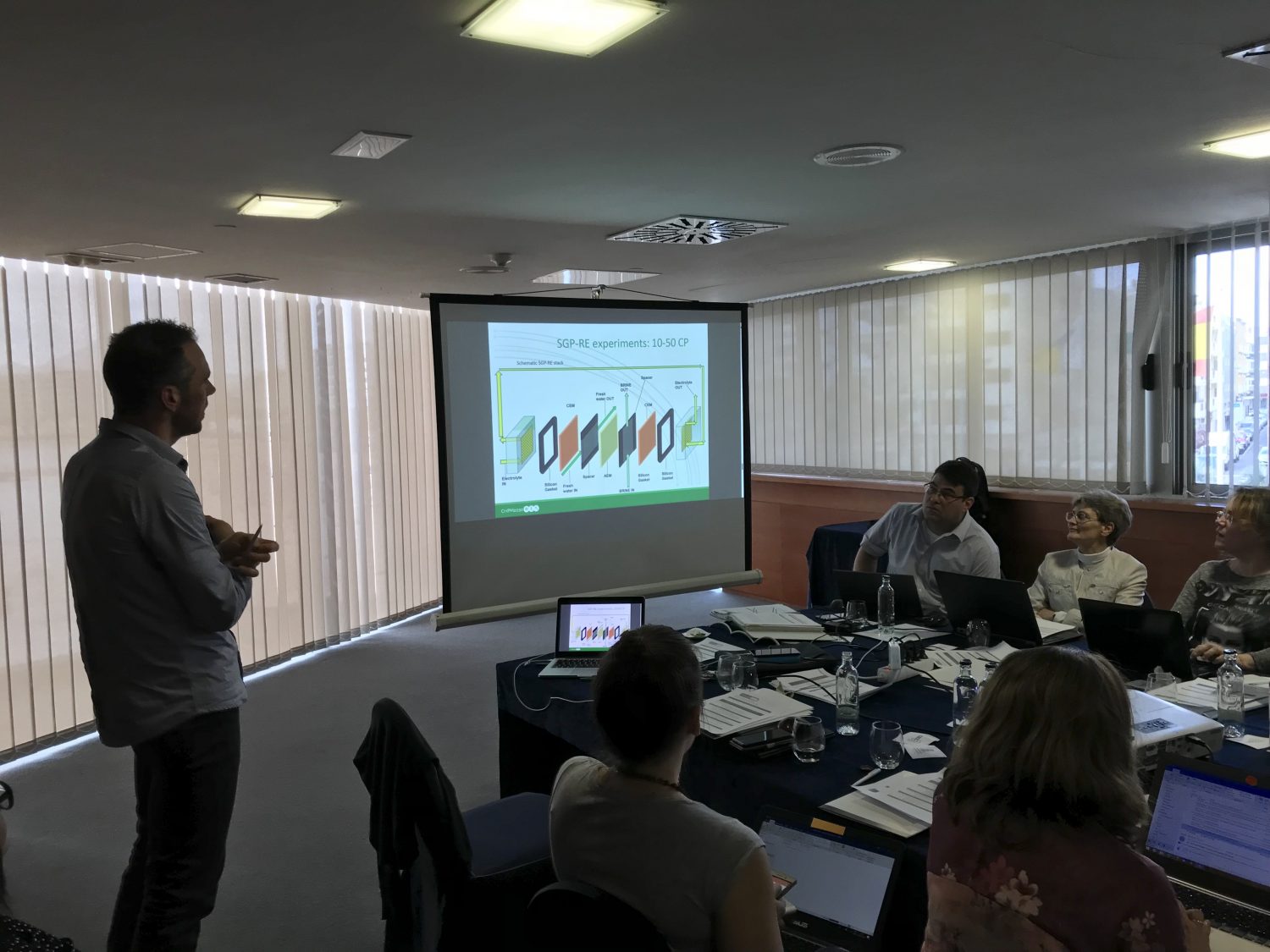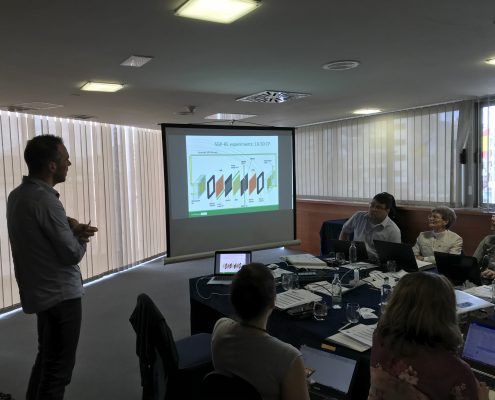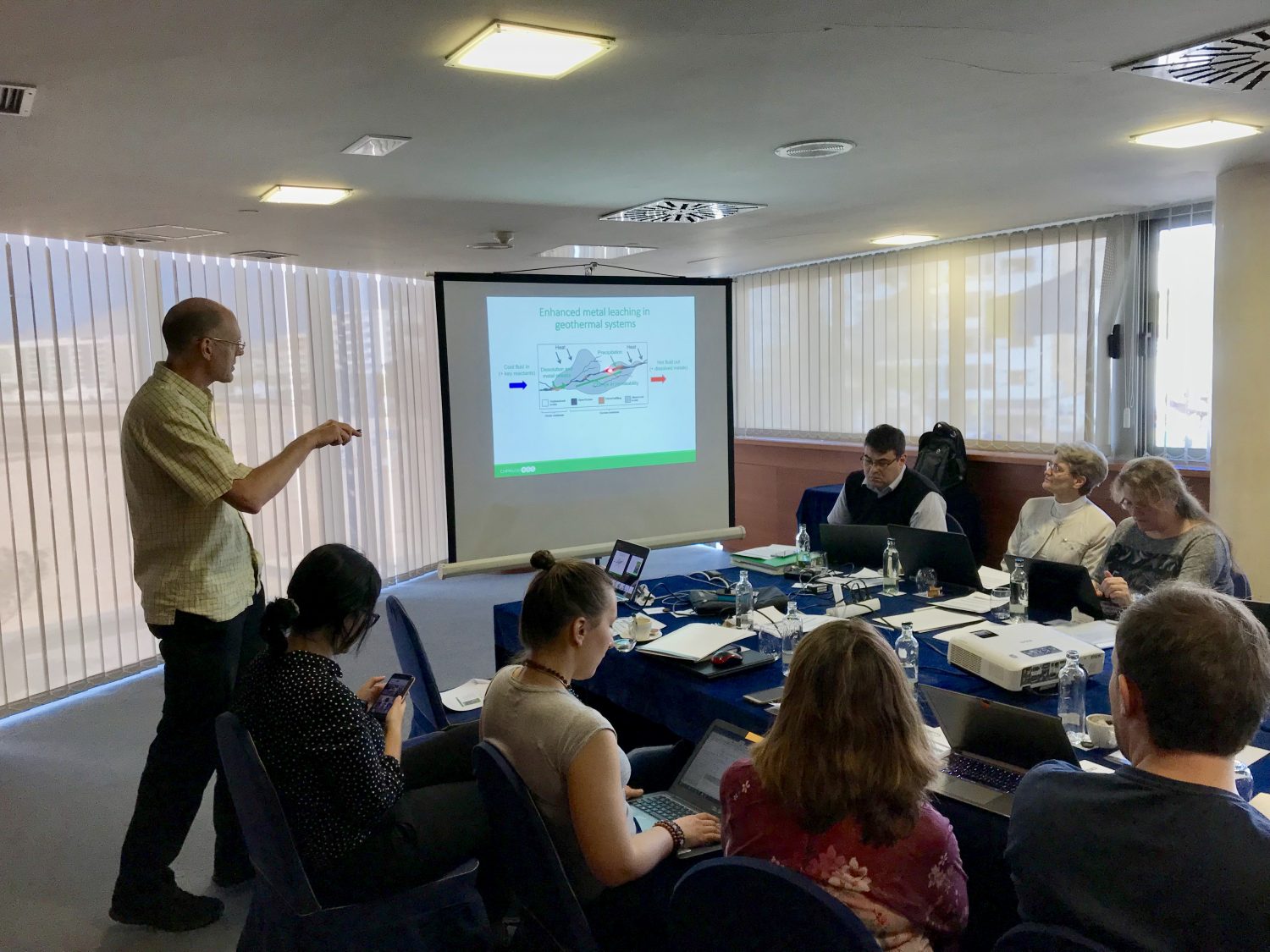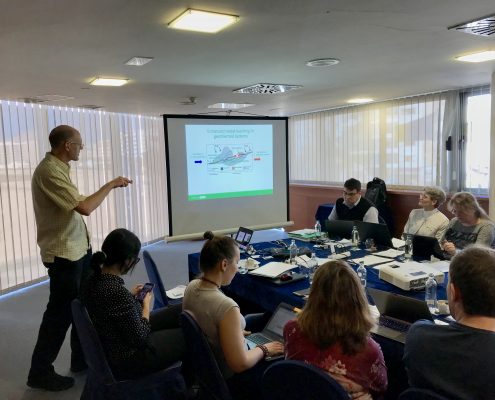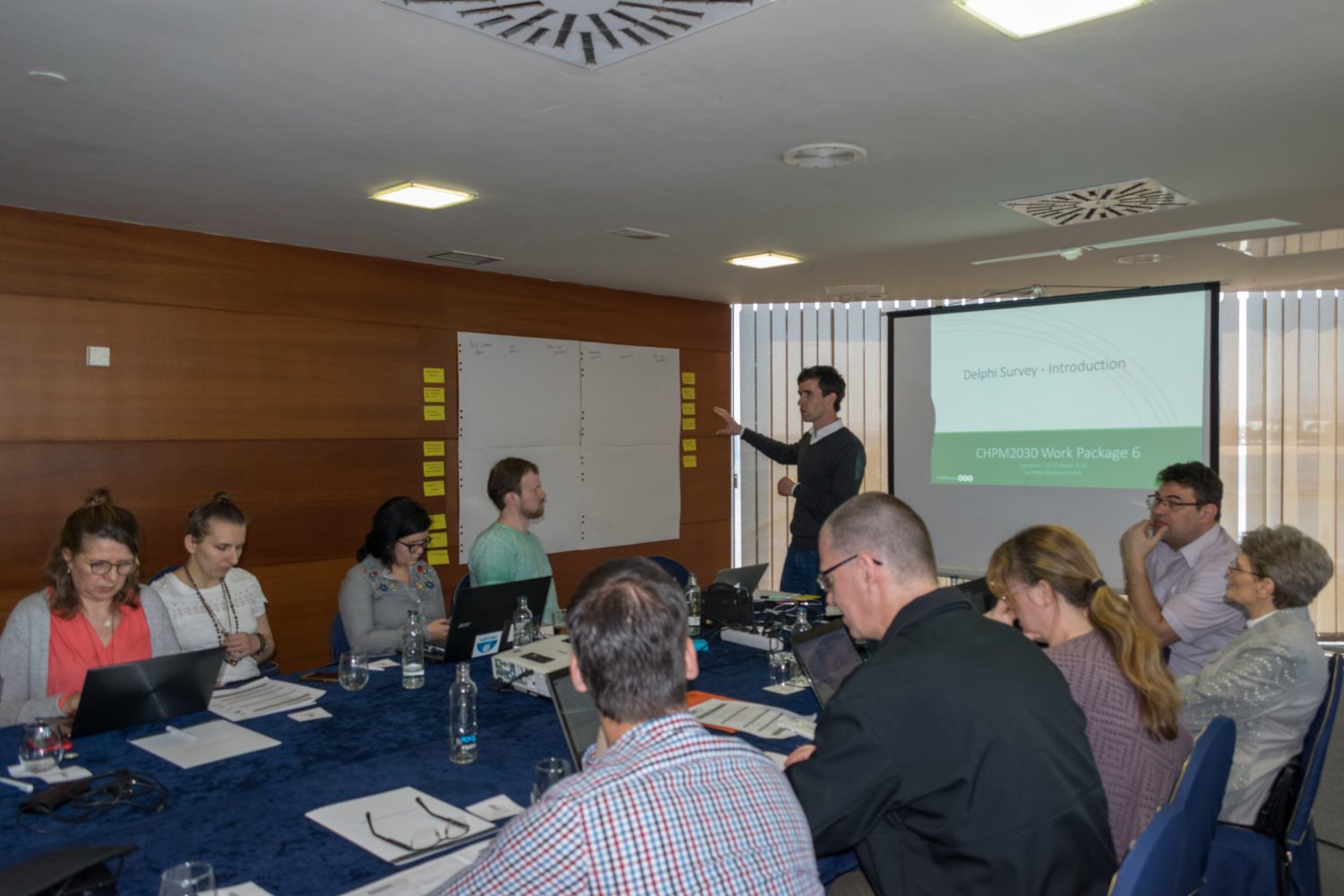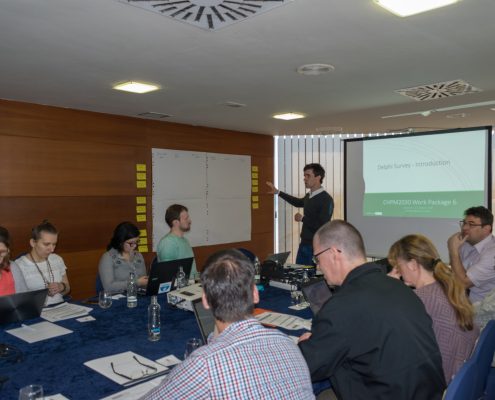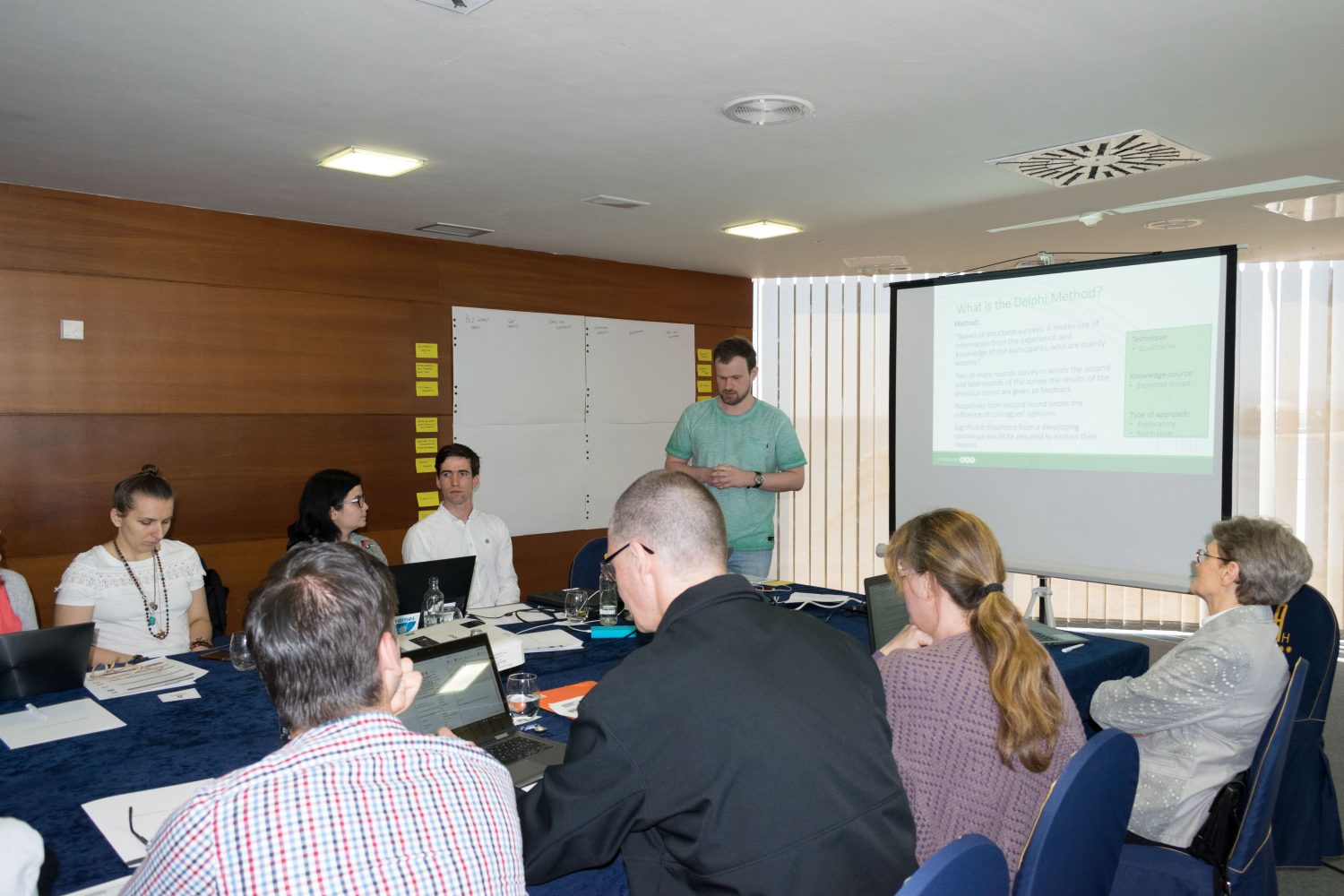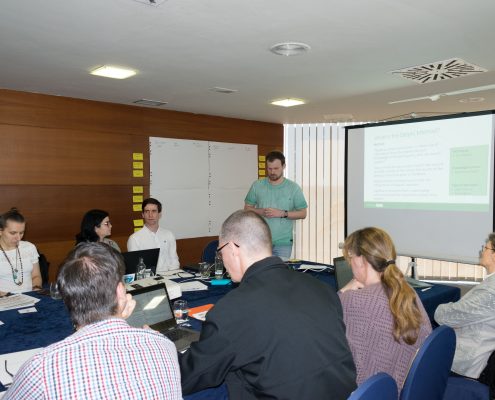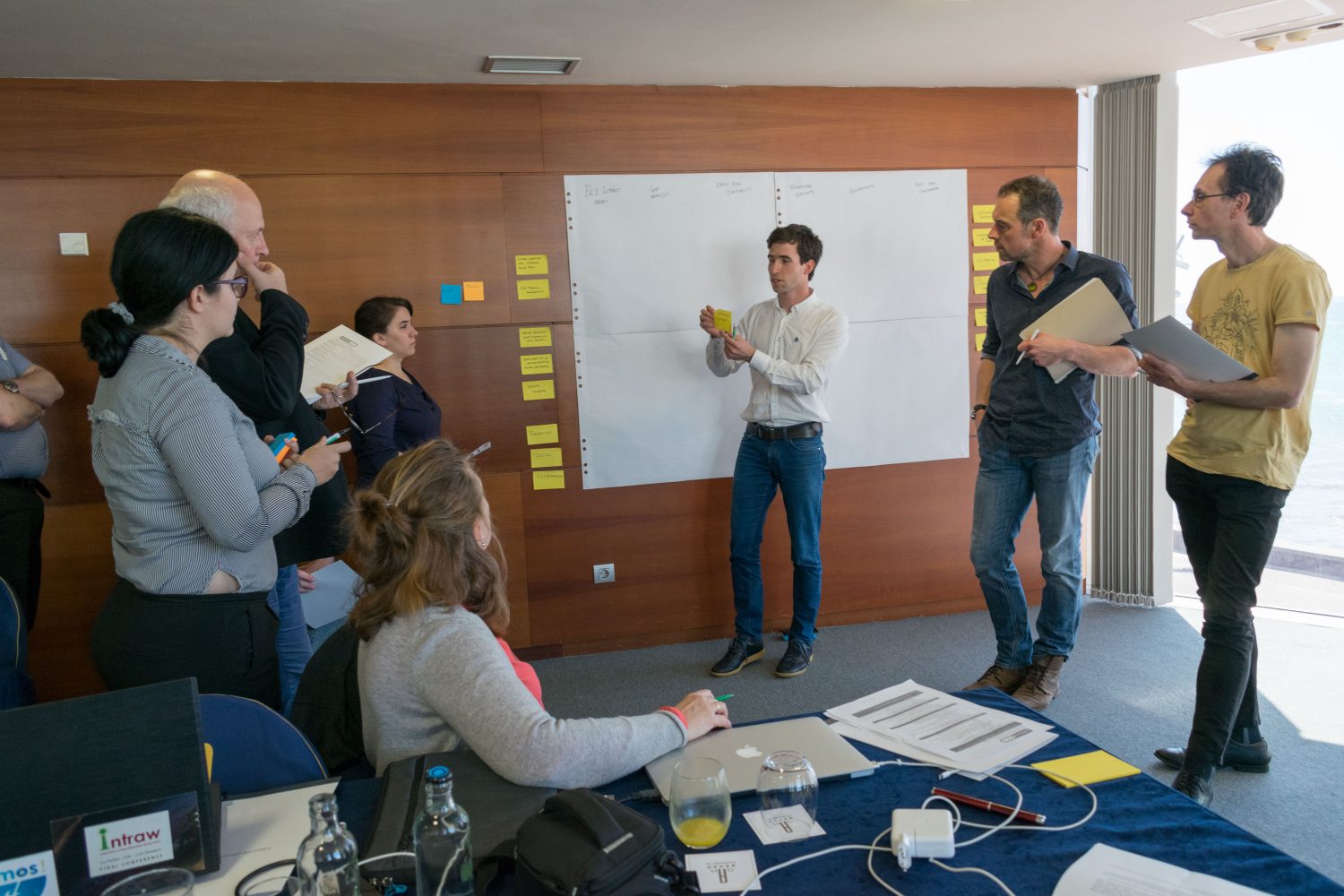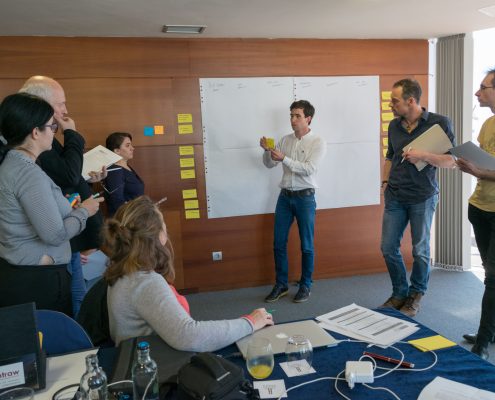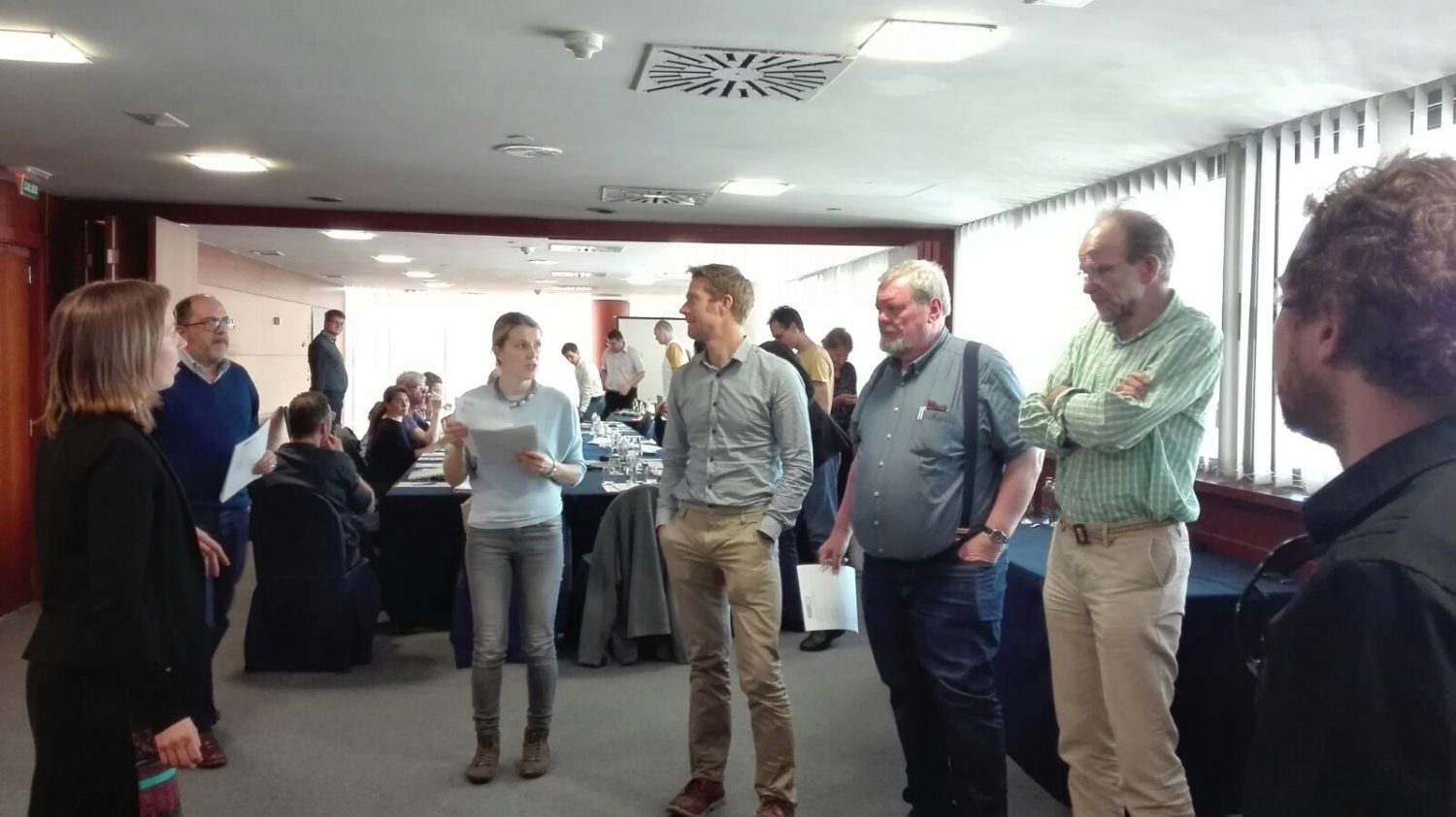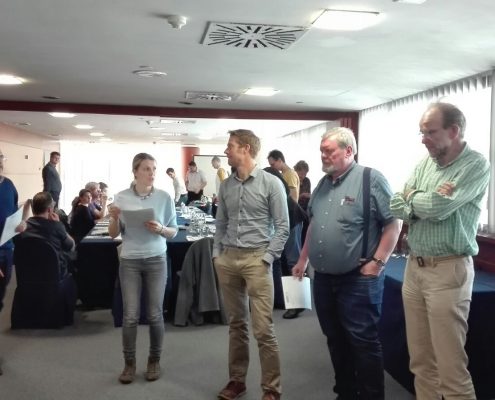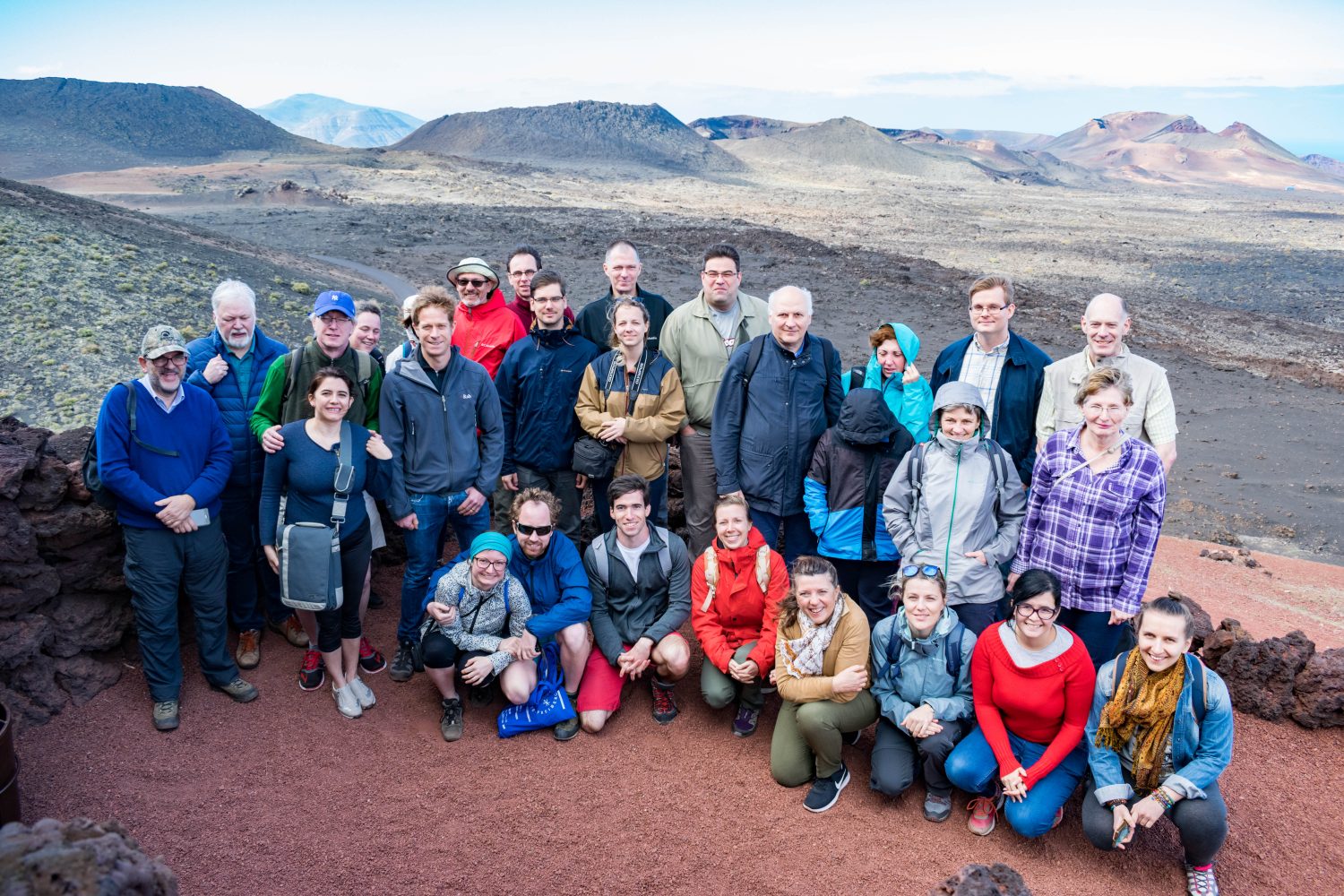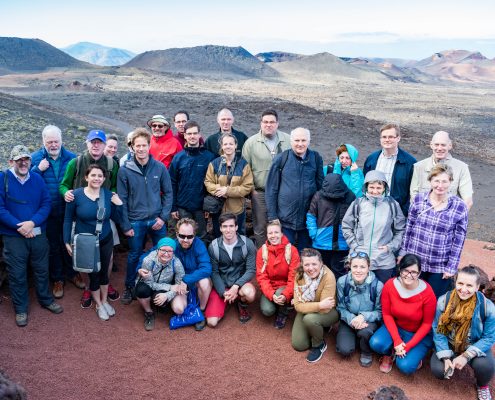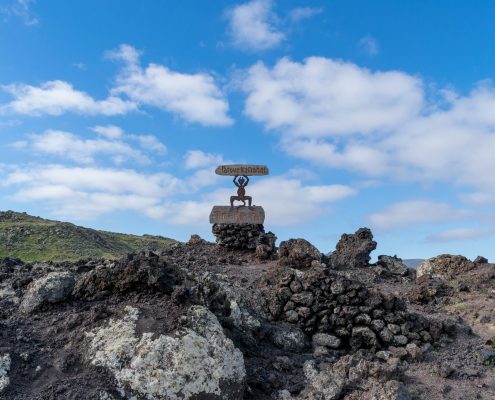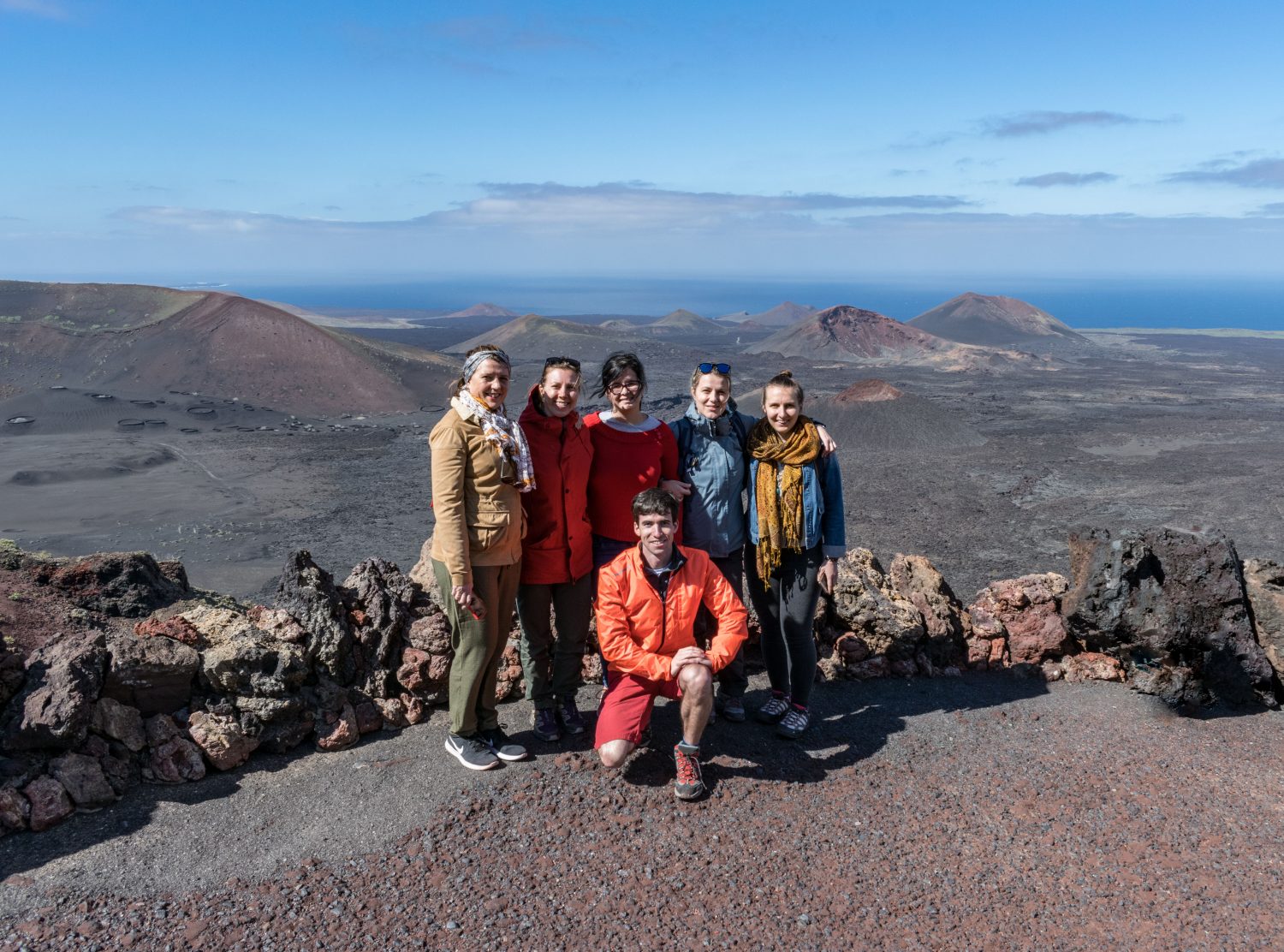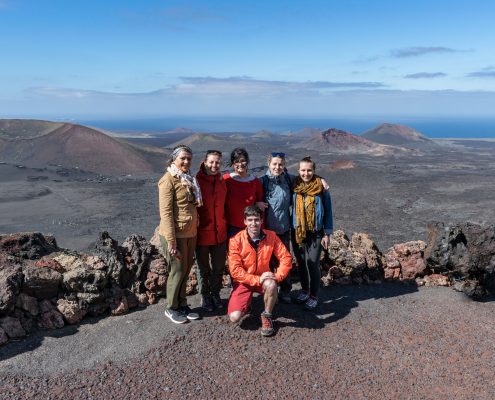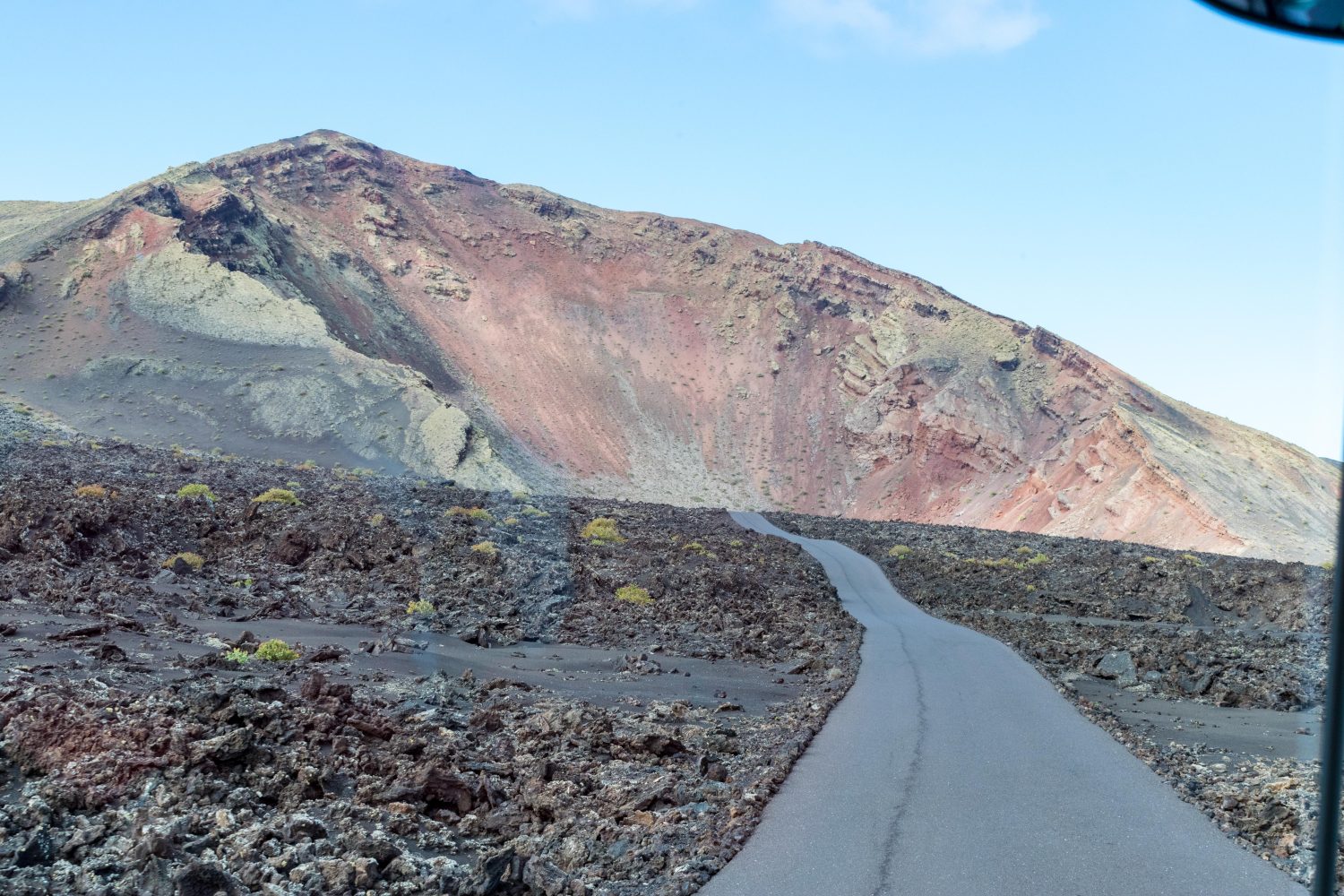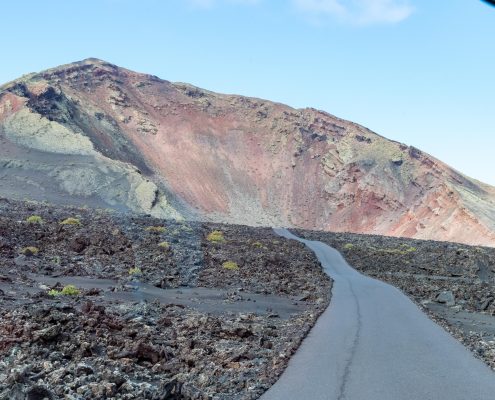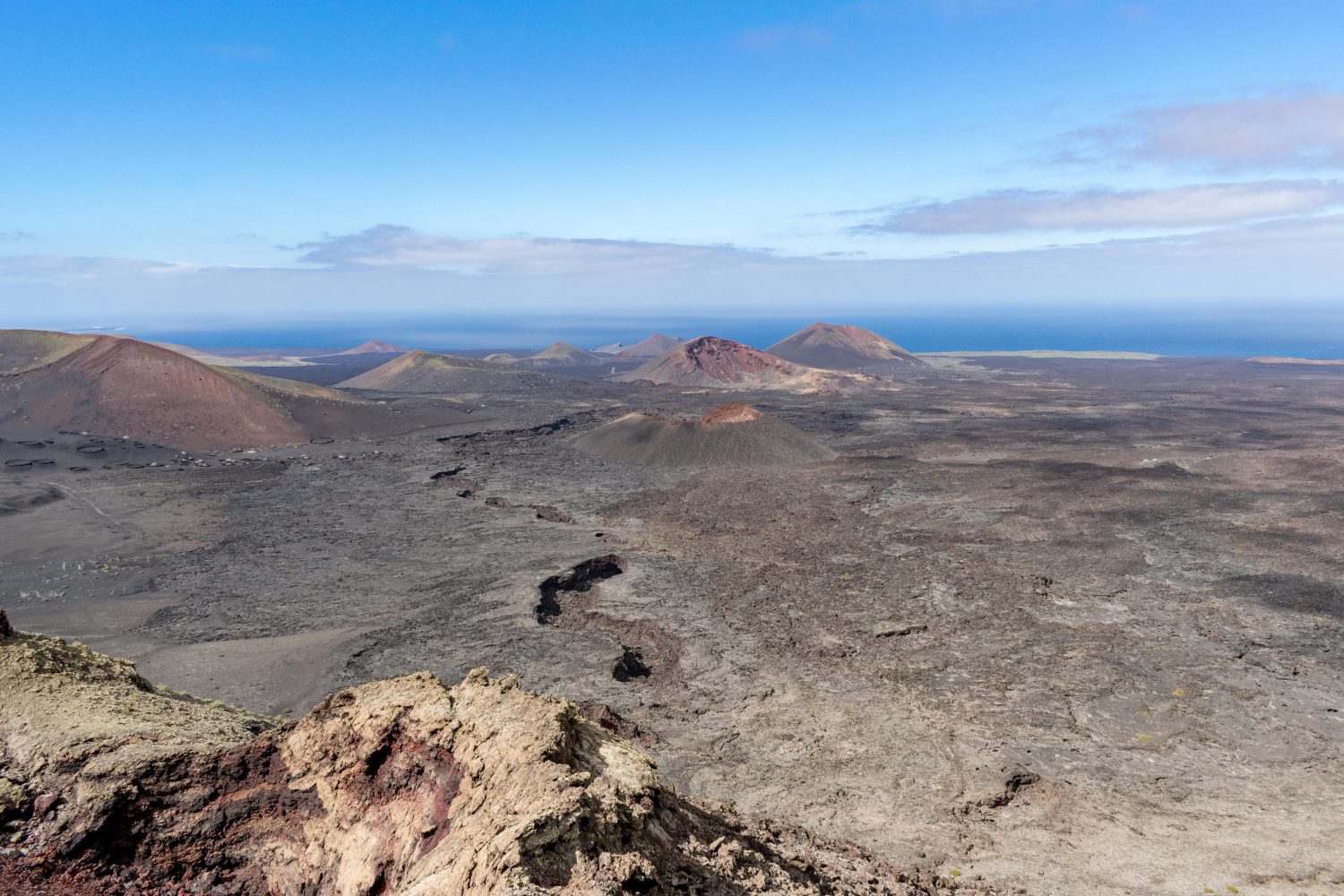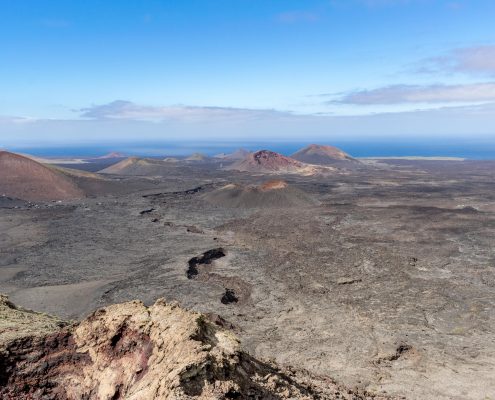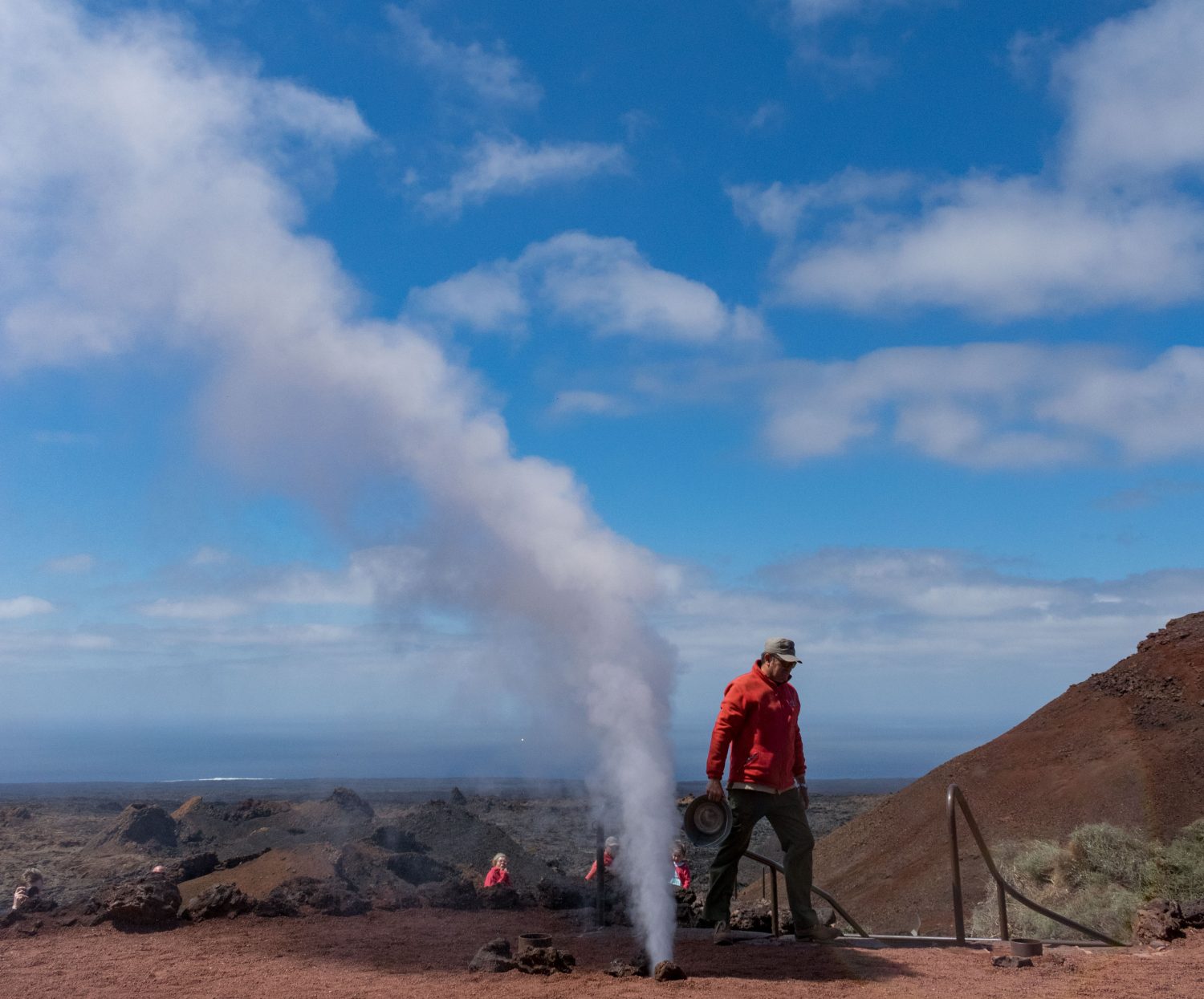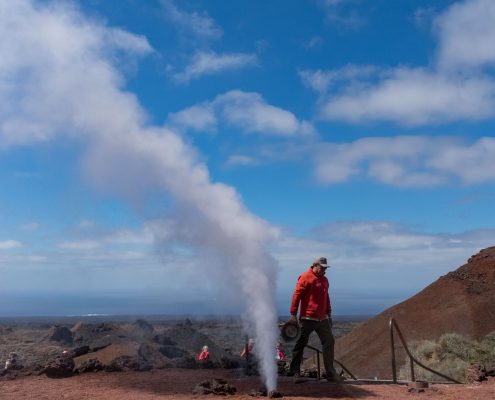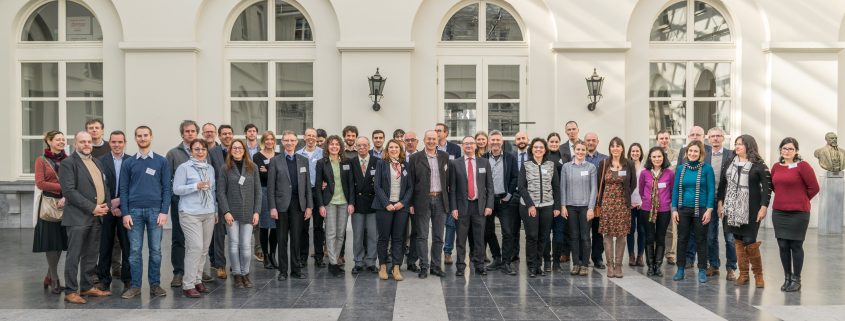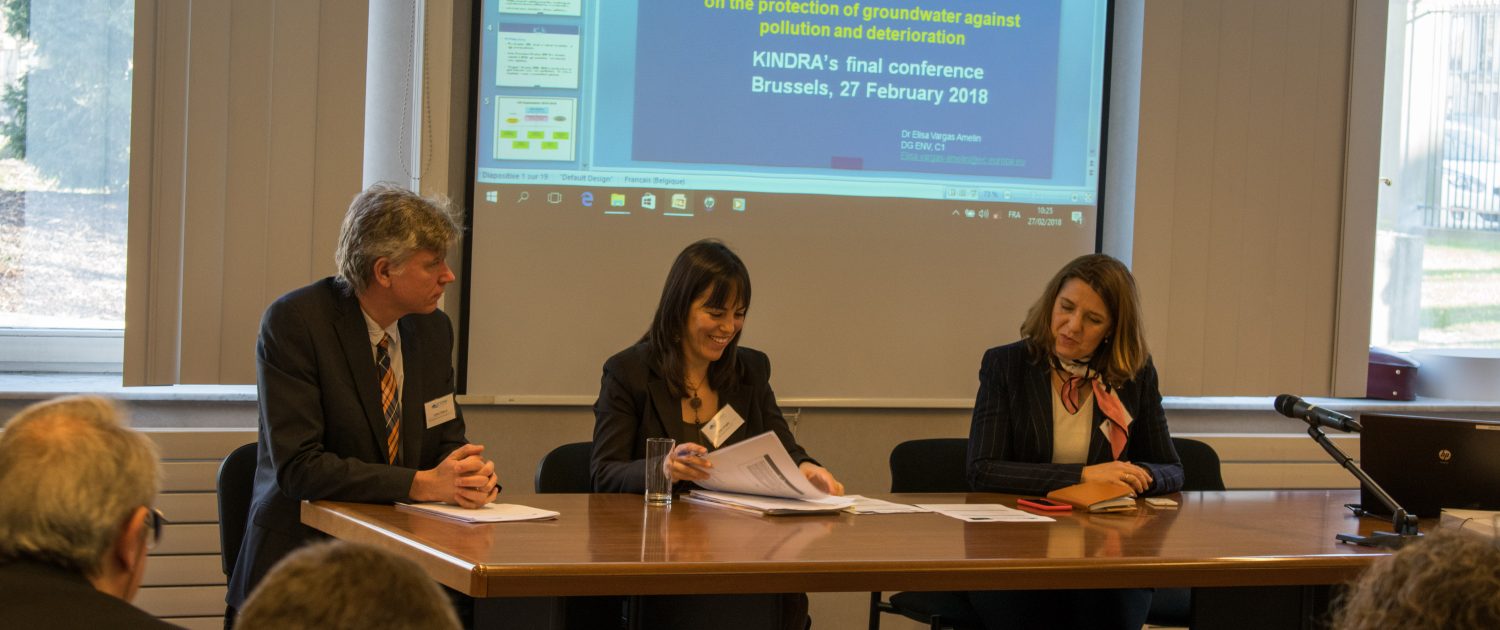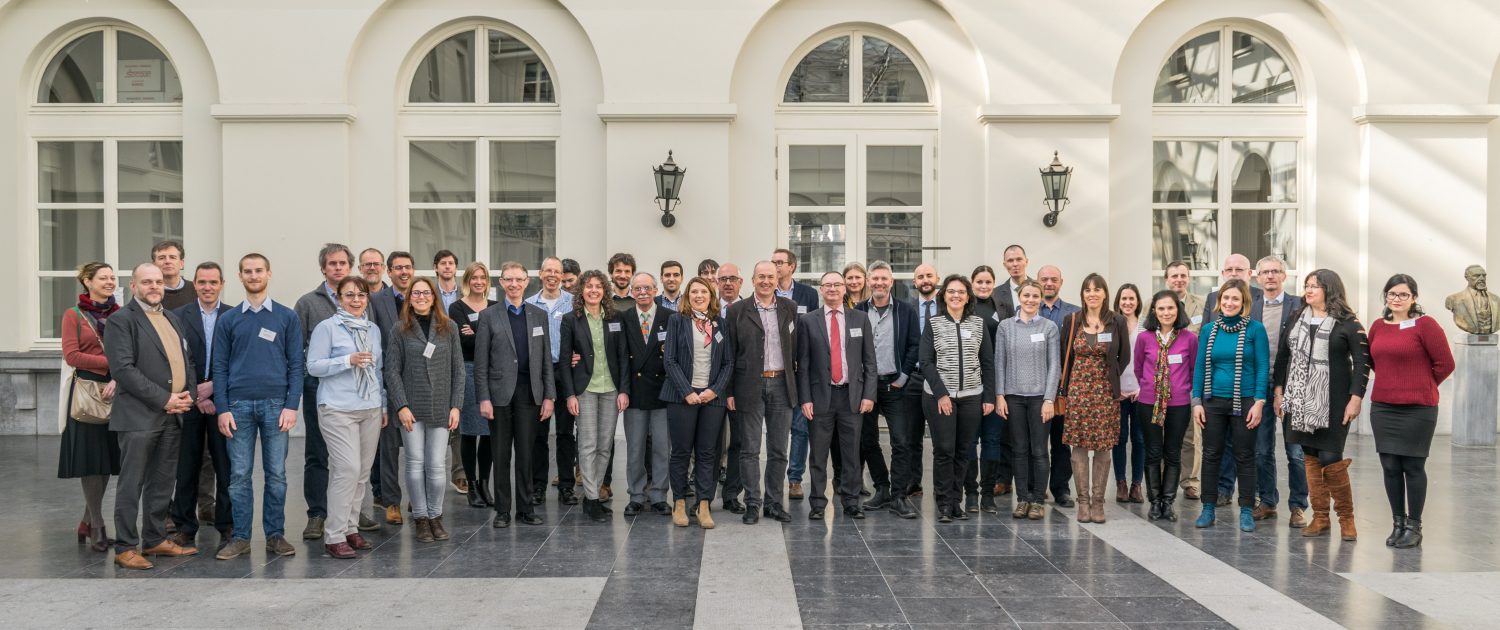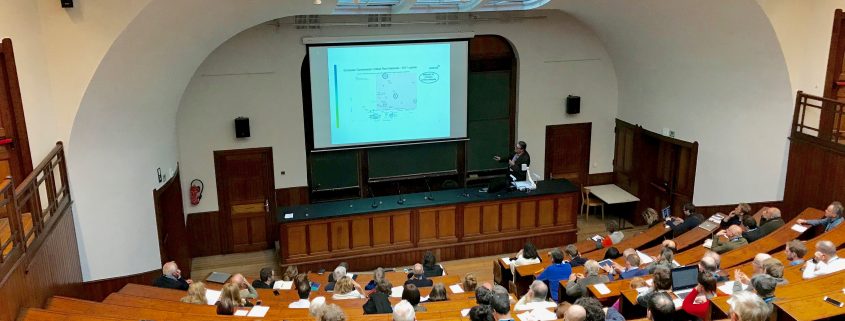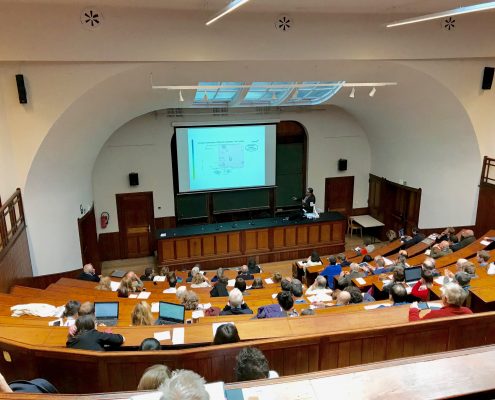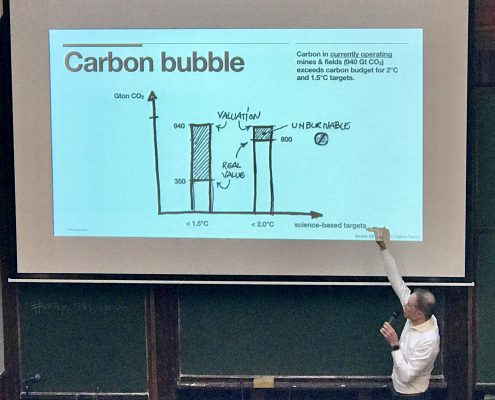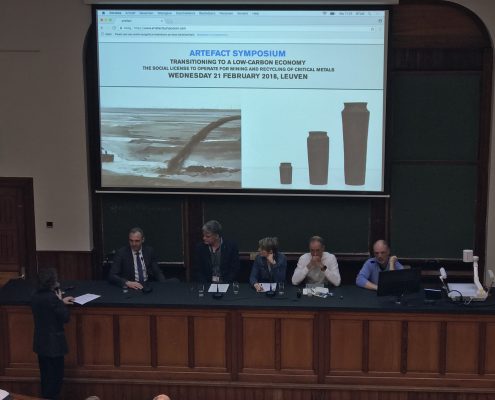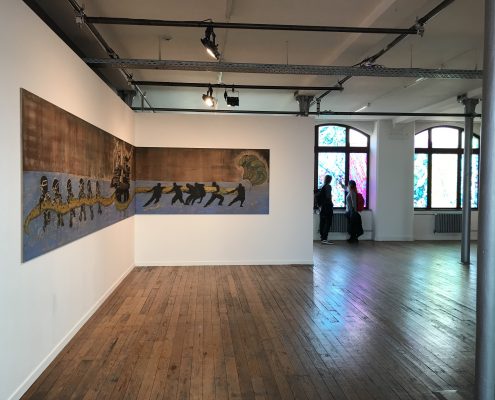The CHPM2030 5th Consortium meeting took place in Lanzarote, Canary Islands, between the 21st and 23rd of March, hosted by La Palma Research Centre. The meeting started with a one-day consortium meeting, followed by workshops on WP4 – System Integration and on WP6 – Roadmapping and preparation for pilots on the second day. During the last day, the participants joined to a field trip in the Timanfaya National Park.
The consortium meeting proceed according to the common practice: going through the each of the Work Packages, updating work done and new results since the last meeting (CHPM Brusels meeting, 2017.10.11-14). After a short welcoming of the participants and meeting practicalities from LPRC, Éva Hartai officially started the meeting with an overall project update, followed by a presentation from Aranka Földessy about preparations for the project reporting. The second session continued with presentations on WP2 – Laboratory experiments and orebody investigation by partners from University of Szeged, BGS, VITO and University of Miskolc. The next session in the afternoon presented progress in WP3 – Metal recovery and electrochemical power generation by VITO and KU Leuven colleagues. The first day also included an update on WP5 – Integrated Sustainability Assessment (University of Szeged and MinPol) and WP7 – Dissemination (EFG).
The second day brought something new to the meeting. The WP leaders decided to take a more interactive approach to introduce their work. The morning session was dedicated to WP4 – System integration, and it was moderated by the respective WP leader, Árni Ragnarsson (ISOR). This is a critical work package where the partners integrate and harmonize different elements of the system together. The discussed topics included: Conceptual framework for CHPM (Combined Heat Power and Metal extraction) power plant, Process simulation and optimisation, Process simulation and optimisation, Final design process.
The afternoon workshop was organized by La Palma Research Centre and was focused on WP6 – Roadmapping and Preparation for Pilots. This work package is setting the ground for subsequent CHPM technology implementation in the future. Therefore, it maps convergent technology areas, studies pilot areas and develops research roadmaps, in order to bring the realization of CHPM technology forward in time. This requires short-term planning (including pilot preparation) and long-term planning (including a Delphi survey).
The first WP6 workshop was dedicated to the long-term planning and the development of a CHPM2030 Delphi survey. Marco Konrat (LPRC) introduced the Delphi method, which will be used later to obtain experts’ opinions on the critical interest areas in CHPM technology. Marco explained that Delphi is a long-term foresight tool to make judgements in the face of uncertainty, expert knowledge based, containing 2 rounds of an iterative process, and that it will assess the long term (2050) applications of CHPM technology. After this, Tamas Miklovicz (LPRC) presented Task 6.1 – Horizon Scanning and Visions objectives, structure and methodology for the CHPM2030 Delphi survey. Within this subtask, Horizon Scanning will present a baseline for CHPM technology in 2018, the Delphi will assess the future of the technology, the established Vision (Visioning workshop later this year) will provide a goal to arrive by 2030/2050 and the Roadmaps will set the implementation of how to arrive to the desired vision. The workshop participants were given the task to first map key interest areas (important for CHPM technology), identify gaps (which is important but uncertain) and nominate concrete issues within the gaps that we are interested in the experts’ opinion.
The second workshop was dedicated to the evaluation of the study areas. Within this subtask all efforts will be made towards the support of the first implementation of CHPM technology. In particular, the focus will be on four areas, represented by BGS (UK), SGU (Sweden), IGR (Romania), and LNEG (Portugal), beside an European Outlook of prospective CHPM location, with the help of EFG LTPs (Linked Third Parties). In WP1 the main objective was to survey data availability on these areas. In WP6 the effort shifts to data evaluation. In order to create a consistent assessment of each site, an evaluation framework has to be set up, which was the aim of this session. Anita Demény presented an update on the LTP work, summarising WP1 results and introducing WP6 planning. After the introduction, the study area representatives presented their plans to evaluate each study area. This was followed by the workshop. The goal of the exercise was to get the technology developers and study area representatives into a dialogue and discuss what a study area evaluation shall include. The technology developers presented requirements, while the study area representatives presented availability at their sites, in a matchmaking exercise.
The CHPM2030 Lanzarote meeting closed with a field trip to Timanfaya National Park, where the partners had a guided tour and learned about the formation and volcanic structures of the park. The eruption started in 1730 and lasted for 6 years – with 100 active volcanoes covering 50 km2! Even though the eruption was almost 3 centuries ago, the volcanic rocks are fresh, due to the arid climate and therefore the lack of chemical/physical weathering. This makes them the perfect place for a geological lesson!
The CHPM2030 Consortium gathers again in Iceland later this year!

